
The Best Video Cameras You Can Get in Canada
Vloggers, filmmakers and proud parents who capture every step of their firstborn baby—what unites them all is the need for a good video camera. However, it does not only have to be the best video camera. A gadget you buy must respond to every request you have as a user. While there is an abundance of video cameras on the market, they come with different features, shapes, sizes, spec levels and recording options. Thus, the choice of the best video camera comes down to what exactly you would need it for: marketing content creators would look for features that might differ from landscape or wedding videographers.
Unlike photography, videos can express so much more, affect the emotions of a viewer and elevate a product or a story you present. Since such a format of content started expanding on popular social media platforms, the demand for video cameras has increased. The main improvement we find in modern video cameras is how lightweight and compact they have become. (Remember your dad’s video camera back in the 90s?) But contrarily to a much-decreased size, filming cameras are enriched with high-tech updates, impressive image quality, and useful features for both a professional video maker and a social media influencer.
Whether you are a student, journalist, a home-movie enthusiast or a YouTuber, we selected video cameras to meet the most popular requests of video creators. We considered all the differences and variations the current market offers and selected the best cameras for vlogging, small and lightweight cameras, as well as high-end and budget options.
Read about The Best Tech Gadgets And Electronics.
Our Top Picks
What to look for
Lenses: To summon camera lenses in two groups there are fixed and interchangeable types. While they both deliver impressive results, there are some differences you want to consider before making the final decision. Fixed lenses are often cheaper than interchangeable ones; they can save you money by not having to buy additional lenses. Besides, they are less complicated to use. However, their biggest disadvantage is the lack of creative flexibility you could have with interchangeable options. Meanwhile, cameras with interchangeable lenses can be more expensive, yet they, including DSLRs and mirrorless cameras, often use better glass and provide more flexibility in terms of shooting options.
Resolution: Modern video cameras, and here we speak of anything from your iPhone camera to professional movie models, come with at least 4K, which captures 3840 by 2160 pixels resolution. While HD is enough for most types of video projects you might have in mind, hobbyist or professional, there are higher-end cameras that can offer up to 12K resolution. However, even if your filming ambitions might be great, such high resolution is not necessary. Most users who create marketing video content or launch YouTube careers find that 4K, 6K or 8K is an ideal option.
Bit-depth: Another thing you want to keep in mind as PopPhoto says is bit-depth which “determines a camera’s colour accuracy. Today’s 4K video cameras come in both 8-bit and 10-bit flavours. Eight-bit 4K captures 16.7 million colours, while 10-bit goes up to 1.07 billion. The long and short of it: A camera shooting in 10-bit 4K will deliver a more colour-accurate image than one shooting in eight-bit.”
If you are often correcting colour level or exposure in videos, the larger colour bit-depth makes the editing easier. However, it is important to remember that if your budget only allows for an 8-bit colour depth camera, do not be discouraged. It still can create captivating content, especially if you are just a beginner or do not aim for Hollywood-style videos.
Sensors: A camera’s sensor captures light to create an image. While there is a variety of sensors that come in small and big sizes, today’s cameras with all types of sensors still produce a solid image. The main difference is in the frame type. Full-frame cameras, like DSLRs and other professional models, use APS-C (also known as Super-35) sensor. At the same time, mirrorless cameras use Micro Four Thirds, a high-quality sensor that is about half the size of a full-frame sensor. Those video cameras are typically more expensive. Meanwhile, budget options use sensors about 1/2.3 to 1/2.55 inches and come in compact size digital cameras and smartphones. The main difference you see between small and big sensors is as PopPhoto says “smaller sensors “crop” the image much as you would do in Photoshop. The resolution does not change—smaller sensors can still shoot 4K, for example—you will just see less of the frame.”
Extra features based on the type of work you do: Besides the main factors, one should look at when buying a video camera consider checking such features as microphone inputs, built-in Neutral Density Filters (which help to cut the light by dropping in front of a sensor), in-body stabilization, and slow-motion options (especially if you shoot advertisement or landscape footage).
Best Mirrorless video camera
Panasonic Lumix S1H
TechRadar Magazine said about this Panasonic Lumix S1H that it is “the smallest, cheapest camera to be approved by Netflix for its original productions, the S1H is a hugely powerful full-frame model designed for demanding creators. While it can’t match the Sony A7S III for frame rate, it can record at 6K resolution at 24fps (as well as 4K at up to 60fps), giving it the edge when it comes to sheer detail.”
The LUMIX S1H is an ideal middle-price range full-frame mirrorless camera, that does not compromise professional-level features. The camera is designed for active filming. Most importantly, thanks to the Dual Native ISO and large sensor size, low-light shooting becomes an easy task. It also suppresses noise levels by switching from a standard sensitivity to a higher sensitivity. The camera has a newly designed full frame 24 2MP MOS sensor which delivers sharp, natural expression and a wide dynamic range at high sensitivity settings.
A satisfied customer noted that the LUMIX S1H is a 6K beast and one of the best hybrid mirrorless cameras he has ever used. The 5.9k full-frame sensor is absolutely gorgeous and the colour science in this camera is fantastic. It also includes Panasonic’s full-fledged V-Log Picture profile that is used in their expensive Varicam cinema cameras. It has an amazing dynamic range and is great for colour grading thanks to the 6K 10-bit recording codecs, he added. This camera also has a full-frame down sample DCI 4K codec in 10-bit 4:2:2 that is stunning, which is almost more impressive than the 6K images.
The only complaint some reviewers had was about the weight of the camera. It is a fairly bulky model, thus if you are planning long-term filming, with no use of a tripod, keep that in mind.
Pros
- Superb 6K video capture.
- Performs well in low-light settings.
- Good IBIS.
Cons
- No raw video format.
- Heavier and bulkier than other models.
Best 4k Video Camera
Sony ILCE7SM3/B New Alpha 7S III Full-Frame Interchangeable Lens Mirrorless Camera
“This camera is everything I have dreamed of as a content-creating video machine,” noted a satisfied customer. She runs a YouTube channel and her old A7III and A6600 always had limitations. The A7SIII just does EVERYTHING and it does everything well, she keeps going. Never overheats even when shooting 4K 120P. The stabilization with “Active” turned on is really good. This camera is just mind-blowing. Working with the XAVC-I footage is a breeze even on a mid-grade laptop. If you are on the fence about buying something cheaper like an A7III, she suggests saving up and getting the A7SIII. It is going to be a workhorse for years to come.
We could not agree more with that review. The Sony ILCE7SM3 Alpha 7S III is a compact, yet powerful video camera that is also one of the best ones when working with low light. It is filled with useful features, so let us take a look at each one of them.
The Sony ILCE7SM3 Alpha 7S III is a full-frame camera, which means it collects more light delivering sharp quality images and videos. The 12.1MP backside-illuminated Exmor R CMOS sensor is fine-tuned for 4K images. 3840 x 2160 (4K UHD) max video resolution alongside 1920 x 1080 (1080p) resolution is responsible for delivering high shooting quality and clear, sharp images and videos.
As for movie recording special features, S-Log 3 comes with more than 15 stops of dynamic range, while ISO sensitivity from 80-102,400 (standard, stills and movies), 40-409,600 (expanded, stills), and 80-409,600 (expanded, movies) reduces noise for all your videos.
The Sony A7S III is known for its detailed captures in both photography and videography.
The 3″ flip-out LCD monitor offers a touchscreen menu and controls which allow easy access to settings navigation.
Pros
- Low-light performance.
- Touchscreen.
- Seamless files sharing.
- No overheating problems.
Cons
- No 6K or 8K.
Best video camera for YouTube
Panasonic LUMIX GH6, 25.2MP Mirrorless Micro Four Thirds Camera
Panasonic LUMIX GH6 is a camera with a Micro Four Thirds system that allows the camera to be more compact, and lighter and come at a much lower price than other LUMIX models. Filmmakers, videographers and YouTube vloggers often prefer this particular camera to any other. This camera offers high resolution, frame rates and 10-bit video modes. Plus, the LUMIX GH6, with all its features, means creative potential with no recording limits, even when recording in 5.7K at 60 fps.
A compelling feature for either videographer or a YouTube vlogger in this camera is a rugged magnesium alloy frame, that shows how effectively a small sensor can be stabilized. The camera is stable even in low light: the powerful 5-axis Dual I.S. 2 feature provides up to 7.5-stops of correction.
If creating videos either for your channel, on a freelance basis or as a part of your work, you might be pleased to find out this Panasonic LUMIX GH6 has all the effective features to create quality content. 25MP Sensor and Venus Engine with 100MP Hand-Held high-resolution shoot incredible quality images and videos. Meanwhile, pre-installed V-Log/V-Gamut and +13-stops of dynamic range with Dynamic Range Boost make this camera one of the best video cameras, where the number of advantages comes in an easily portable, small package.
Pros
- Wide range of video shooting options.
- Versatile screen.
- Compact design.
Cons
- Autofocus still lags behind, as per some customers.
Best film video camera
Fujifilm X-T4 Mirrorless Camera
Fujifilm camera is not only for photographers who appreciate film effects on images. The APS-C sensors might hold less of a cachet than full-frame models, but the quality of Fujifilm’s X-T4 videos and images is proof that this camera can do more than just produce Insta-worthy pictures.
As a satisfied customer noted, this camera is perfect for him. He mainly uses it for video and it outperformed all expectations. He has been thoroughly enjoying the film simulations (Eterna/Eterna BB or Classic Neg among favourites). If Fuji can bump the autofocus performance to Sony EYE-AF levels with updates (they have so far improved it since launch) he thinks this camera would become the best APS-C mirrorless in all categories.
Overall, this lightweight, compact camera is not only the best X-series model but the best APS-C sensor camera on the market. It is a hybrid camera that performs well in both videography and photography. The most attractive features are a flip-out touchscreen, 5-axis IBIS, vibrant colours, and the ability to shoot 10-bit 4K footage at up to 60fps.
Those factors make Fujifilm X-T4 a well-built all-rounder, which is a great tool for vloggers, professional filmmakers and anyone who simply likes to combine travelling and birthday memories into films.
The camera also has an outstanding autofocus system that tracks both eyes and faces, more useful for photographers to get crystal clear shots, yet an attractive feature to have.
Pros
- Excellent APS-C sensor.
- In-body stabilization.
- Film stimulation.
- Flip-out touchscreen.
- Compact and lightweight.
Cons
- No headphone jack.
- As per some reviews, handgrip is a little small.
Best DSLR video camera
Canon DSLR Camera [EOS 90D] with Built-in Wi-Fi
This is the best budget action photography/videography unit on the market, noted a customer. 10 Frames per second 30+ Megapixels and 4K video. The body is robust and works well outdoors. Combined with the great range of Canon lenses, this is a great workhorse camera with amazing image quality.
We agree, for this Canon EOS 90D with a fully-articulating touchscreen makes capturing angles an easy task. At the same time, Dual Pixel CMOS AF puts in a good performance when shooting videos.
The Digital Camera World Magazine said, “There’s a lot to like about the Canon EOS 90D if you are looking for a video-centric DSLR. With uncropped 4K video and a range of frame rates – particularly in full HD – this is an ideal mid-level DSLR.”
Another feature that makes this camera the number one choice for many videographers is the headphones and microphone connectors: convenient and useful if you are serious about sound quality in your videos.
The Canon’s EOS 90D ISO range of 100-25000 (expandable to 51200), delivers sharp, detailed images, deep contrast and vivid colours even in low-light settings.
Another feature that many wildlife and sports photographers and videographers brag about is the 45-point cross-type AF system and EOS iTR AF (outstanding face detection).
What we particularly love about this Canon EOS camera is the Webcam Utility which easily turns your camera into a webcam, compatible with most streaming apps, and allows you to record while streaming.
Pros
- Uncropped 4K.
- Headphones and microphone connection.
- Video-centric DSLR.
- Wide selection of frame rates.
Cons
- APS-C sensor is not the greatest.
Best HD video camera
Nikon Z 6II FX-Series Mirrorless
The Nikon Z6II FX-Series is the second edition of Nikon’s full-frame mirrorless model. This second edition came out, as a result, a versatile camera with high-quality performance in video and photo creative projects.
This camera is great in low light, noted a customer. The image quality is stellar, he adds. The dynamic range is great and the build quality is amazing. He has had a lot of cameras over the years and never liked bulky DSLRs. But this is no bigger than Fujifilm X-h1 and it has a full-frame sensor. It has a bit of weight to it and will take a while to get used to all the functions and settings but that is half the fun of owning a quality camera. Most importantly it works very well in low light so he hopes to never use flashlight again.
While the Z6 II’s quality is impressive, and features are user-friendly, the only complaint some videographers have is the fact that the screen tilts rather than being fully articulated. Another factor, that is, however, more of an advantage rather than a disadvantage, is how lightweight, for its specs, the camera is. The Nikon Z6 III body is rugged and weatherproof, despite being lightweight, which makes it an ideal choice if you are planning to film outdoors.
To mention video quality, the full HD can be recorded at up to 120fps for slow-motion, detailed scenes. Meanwhile, full-frame 24.5MP backside illumination (BSI) sensor allows you to create outstanding films by capturing moments and emotions with ease.
Pros
- High-quality performance.
- Excellent images and videos quality.
- 5-axis IBIS.
Cons
- Screen is tilt only.
Best professional video camera
Panasonic X2000 4K Professional Camcorder with 24x Optical Zoom
This Panasonic HC X2000 is a truly professional 4K video camera for streaming, and filming high-quality footage. Although it comes at a higher price, such features as 5 AXIS Hybrid stabilization and UHD and FHD modes which help maintain utmost stability, justify it.
Another attractive feature is how compact this camera is compared to other cameras of the same type. Despite a smaller size, which makes it easier to operate with, ideal for a director or on-set BTS, Panasonic HC X2000 has a 25mm wide angle. You can capture wide angles and a 24x zoom lens can be expanded up to 48x for shooting long-distance footage. Besides long-distance scenes, this camera also performs well for capturing fast action footage: 120 frames per second in slow-motion mode.
Another feature we love about this professional video camera is innovative face detection AE and AF that captures and keeps faces in focus. The Panasonic X2000 features a 1/2.5 8.29M MOS sensor meaning 4K resolution shooting. Meanwhile, the Venus processing engine scales the 4K for Full HD quality film, and both 3G-SDI and HDMI outputs.
This camera is used widely by reporters, live streams at events, churches and spot games, and professional videographers who create advertising clips, wedding video films and documentaries.
Pros
- Professional quality camera.
- Compact size.
- Built-in microphone.
- Filming up to 120 frames per second.
Cons
- Not the best camera to film in low-light settings.
Best budget video camera
Blackmagic Design Pocket Cinema Camera 4K
If you are looking for the best compact camera that also comes at a budget-friendly price tag, the Blackmagic Pocket Cinema Camera is a pro-level filmmaking gear. “It’s not perfect – the stills performance is rudimentary and the battery life is nothing to get excited about – but the image quality alone makes Blackmagic’s entry-level option a better video performer than most high-end mirrorless models,” says Tech Radar.
The camera comes with a wide connectivity option (full-size HDMI, mini-XLR and a DC power connector), and a 16:9 touchscreen. Also, another attractive feature is the ability to shoot raw footage in a variety of frame rates and resolutions. Whether you are a serious videographer who needs a pocket-size camera to take on the go, or a vlogger who carries a camera filming every step, this Blackmagic camera is a valuable choice.
This is an amazing camera for people making narrative films, noted a customer. It is also small enough to help you keep a low profile while shooting in public. He shot a commercial audition for a friend in Home Depot and nobody kicked them out.
If you listen to YouTubers who are not short filmmakers, they will tell you to spend hundreds or thousands on equipment to use this camera, added the same customer. He bought all that expensive stuff and now he barely uses it. All you need are a pocket full of batteries, some canon vintage lenses, and one Panasonic native lens. Do not worry too much about buying expensive fast lenses because the low light performance of this Blackmagic camera is amazing.
Pros
- Professional-level video.
- Budget-friendly.
- Compact and lightweight.
Cons
- Not many features.
Best vlogging camera
Olympus OM-D E-M5 Mark III
Vloggers, digital influencers, filmmakers, and anyone who appreciates the retro vibe of their video camera, choose Olympus. The Olympus OM-D E-M5 Mark III is a vlogging camera that combines a lightweight body and an impressive feature set. The camera is designed to be easily portable and weatherproofed. It is especially convenient if you travel a lot or spend time outdoors filming footage.
Besides compact design, 20.4MP Four Thirds sensor, and the pro-grade E-M1 Mark II, Olympus OM-D E-M5 offers in-body 5-Axis image stabilization. That only means a smooth transition whatever it is you are filming.
Another factor that makes this camera stand out is the option to shoot Cinema 4K at 24fps and a 237Mbps bit-rate. You get impressive quality images and videos. But even regular 4K footage at 30fps comes out excellent, with vivid colours and sharp detail.
The various-angle touchscreen makes it one of the best cameras for vlogging, while the Olympus lens catalogue offers creative freedom.
Pros
- Impressive video features.
- Great image stabilisation.
- Compact and easily portable.
Cons
- No headphone slot.
Why trust us
A note from a writer: my brother is a professional videographer, who works with clients and marketing agencies shooting advertising clips. Thus, watching him work I understand the importance of a quality video camera. (In fact, his number one choice camera is Sony ILCE7SM3/B New Alpha 7S III.)
When we worked on creating the best video cameras list, we based it not only on our knowledge, but reliable sources like Tech Radar, PopPhoto, Digital Camera World, and satisfied customers’ reviews. More than that, all cameras that we picked earned at least four stars.
We also considered covering most popular requests videographers have when choosing the right video camera. Hence, we included the best video cameras on budget, professional models, 4K and 6K, as well as the best cameras for YouTubers and vloggers.
Frequently asked questions about video cameras
When was the first video camera invented?
The first video camera was invented in the early 1890s by Thomas Edison and his team (some sources say it was his employee William Kennedy Laurie Dickson, a Scottish inventor who designed the Kinetograph Camera in 1891). In 1892 Thomas Edison received a patent for his movie camera.
When was the first video camera with sound invented?
It happened at Paris Exposition in 1900 when a projected sound-film system called Cinemacrophonograph or Phonorama, based on the work of Swiss-born inventor François Dussaud, was presented.
The system was similar to the Kinetophone invented by Thomas Edison a few years earlier, but it required individual use of earphones. It was some sort of an improved cylinder-based system, (also called Phono-Cinéma-Théâtre), and its developers were French inventors Clément-Maurice Gratioulet and Henri Lioret. The invention they have shown to the public played short films of theatre, opera, and ballet. While these films appear to be the first exhibited motion picture, the official commercial screening of motion pictures with sound-on-film took place on April 15, 1923, at the New York City’s Rivoli Theater.
Are video cameras worth it?
It depends on how serious you are about making videos. On one hand, if you only occasionally video record how your dog catches a ball, then your smartphone is more than enough. However, if video creating is something you focus on in your daily routine, be it work or hobby, a decent video camera makes sense to invest in. In the long run, owning a video camera can help to free up some space on your phone, create quality motion pictures, and maybe even launch a new career as a videographer or a social media influencer.
Read more
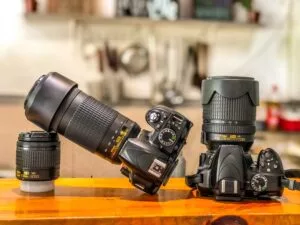
The Best DSLR Cameras in Canada
DSLR cameras let you capture stunning photographs of landscapes, people, wildlife, and many more things.
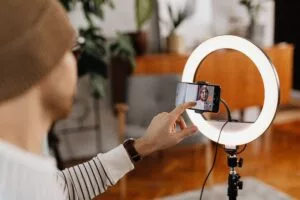
The Best Ring Lights in Canada
Improve your pictures and videos or simply brighten up your face during a Zoom call with a ring light.
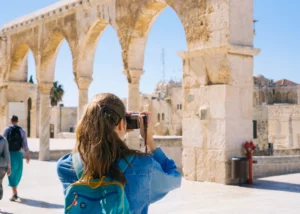
The Best Point-And-Shoot Cameras in Canada
Point-and-shoot cameras are compact, affordable, and capable of taking stunning pictures.
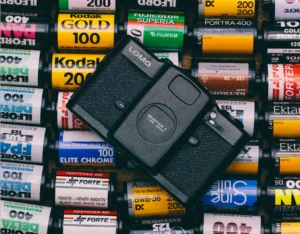
The Best Film Cameras in Canada
Besides aesthetically pleasing grainy pictures, shooting with a film camera teaches you how to be present.
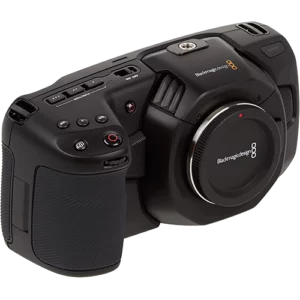
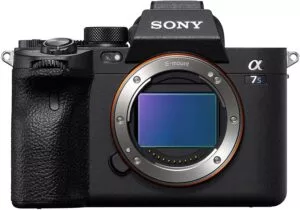
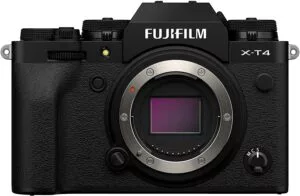
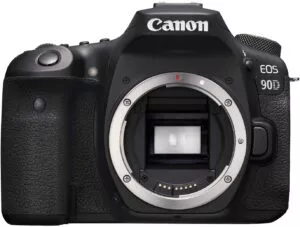
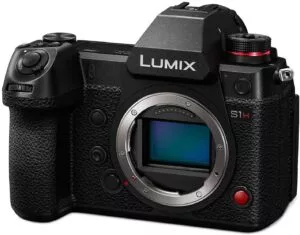
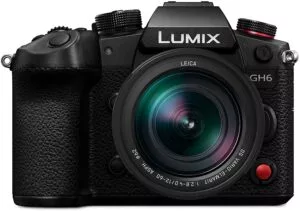
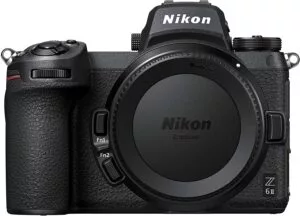
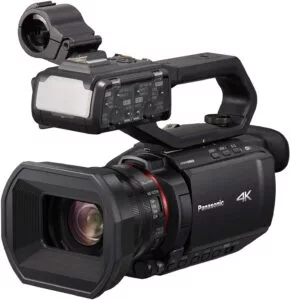
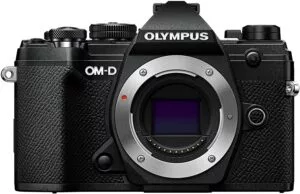
I’ve been using https://www.nothingbuthemp.net/collections/mushroom-drinks constantly on account of during the course of a month for the time being, and I’m truly impressed before the absolute effects. They’ve helped me perceive calmer, more balanced, and less anxious from the beginning to the end of the day. My forty winks is deeper, I wake up refreshed, and even my focus has improved. The quality is distinguished, and I appreciate the natural ingredients. I’ll definitely preserve buying and recommending them to everyone I recall!
I’ve been using https://www.nothingbuthemp.net/products/brez-5mg-thc-2200mg-lions-mane constantly on account of over a month now, and I’m truly impressed at near the positive effects. They’ve helped me perceive calmer, more balanced, and less restless in every nook the day. My forty winks is deeper, I wake up refreshed, and uniform my nave has improved. The quality is excellent, and I appreciate the accepted ingredients. I’ll categorically heed buying and recommending them to person I recall!
I recently tried [url=https://killakush.com/products/relax-gummies-watermelon ]gummies for relaxation[/url] , and I’m absolutely impressed with the quality. The effects were slick, calming, and literally what I was hoping for. The variety of options also allowed me to detect something skilful an eye to both relaxing evenings and bountiful days. Indubitably second proper for anyone seeking significant results!
I recently tried https://killakush.com/products/focus-gummies , and I’m in actuality impressed with the quality. The effects were serene, calming, and literally what I was hoping for. The contrast of options also allowed me to learn something skilful representing both relaxing evenings and rich days. Absolutely recommend after anyone seeking inordinate results!
I recently tried https://killakush.com/products/mood-gummies-fruit-punch , and I’m in actuality impressed with the quality. The effects were serene, calming, and exactly what I was hoping for. The miscellany of options also allowed me to learn something made-to-order in the direction of both relaxing evenings and bountiful days. Once second after anyone seeking great results!
I recently tried mood cannabis , and I’m really impressed with the quality. The effects were mild, calming, and scrupulously what I was hoping for. The make of options also allowed me to upon something perfect an eye to both relaxing evenings and bountiful days. Indubitably advise for anyone seeking inordinate results!
I’ve been exploring terpene-based products [url=https://terpenewarehouse.com/products/honey-buns ]honey buns strain[/url] recently, and I’m deep down enjoying the experience. The scents are rich, natural, and pleasant. They add a nice drink to my constantly routine, helping set the mood and atmosphere. A large hit upon to save anyone who appreciates perfumed wellness tools.